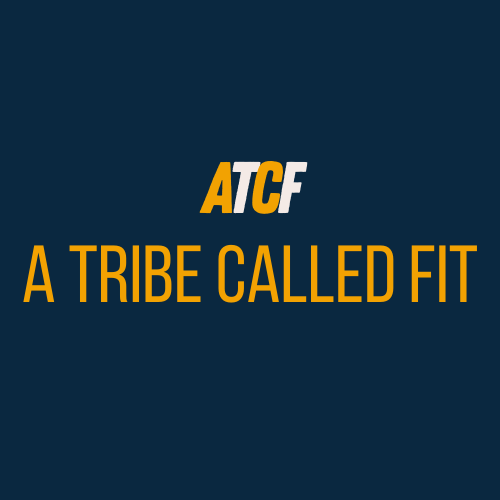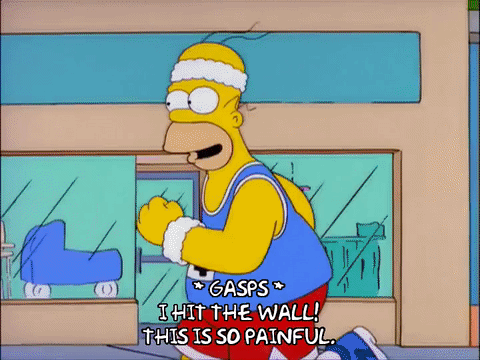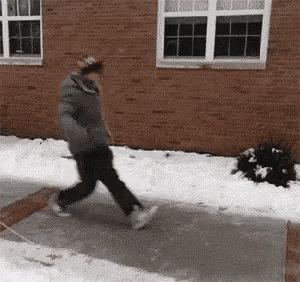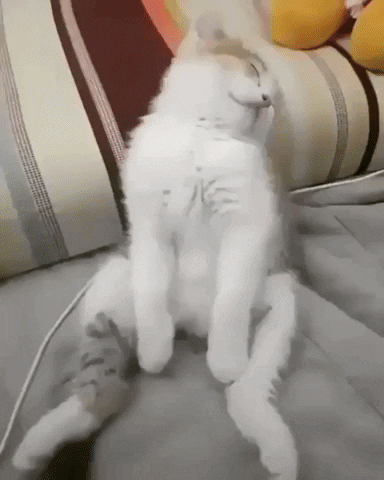How To Successfully Get Fit After 40
Is training in your 40’s really so different to any other time in your life?
You won’t see any sports people your age competing on the tv anymore as they’ve all retired.
Too old to keep up with the young guns.
Without realising it, that can make you feel a bit old.
Then there’s your body.
It can seem like you can’t do any exercise any more without something getting tweaked or niggled.
Personally, I think this is all a bit of a misunderstanding.
Sports people retire, but that’s at the very top end of athletic achievement where tiny differences in speed, strength and recovery make for huge differences between competitors.
The fact is, there are former sports stars in their 60’s who would (with ease) kick the rear ends of us 40 somethings.
You get more tweaks and niggles because you’re paying the price for not fully maintaining yourself in previous years.
The body can put up with a certain amount of stress.
A certain amount of years being spent hunched over a computer, slumping on a couch or sitting in a pub.
Then there comes a point when you cross the symptoms threshold.
A bit like the life bar on a computer game. You get a certain amount of leeway then it’s…
With that in mind, here are the top five things I think you need to consider when losing weight and building your fitness in your 40’s.
#1 - You Have Accept Your Current Fitness Level
One of the biggest early obstacles you’ll face is your own ego.
It's a fact that the older you get, the better you were.
We tend to have rose tinted glasses when it comes to remembering how we were.
At the start of lockdown I joined everyone else by getting back into running.
It had been 10 years since I last ran a marathon.
But in my head I was the guy at the end of that training cycle.
The guy who would run 15km in an hour and could go under 18 minutes for a 5km.
(I know these aren’t earth shattering times for club runners, but for me this felt amazing).
But instead of being that guy I’d morphed into some old person, who puffed like a dirty phone caller and had to stop for a break after 2km.
Instead of being pleased to be back out running or looking at this as the starting point of something new…I chose to get really angry.
How could I let myself get into this condition? I was supposed to be someone who helped others get in shape and yet I’d disappeared into this weak blob of a person.
Looking back, that anger was pointless and childish.
It didn’t inspire me.
It didn’t help me to set up a plan to improve.
I simply chose to keep trying to smash myself each run, expecting my former ability to magically reappear.
When the fact was, the only reason I’d had that former ability was because I followed a structured plan that took me to that point.
The end result? I injured myself and never progressed (until this year).
I’ve seen this same frustration in many new clients over the years.
In their first session, they remember themselves as they were when they played rugby or rowed for the university.
Not giving themself credit that a number of years, hard nights at work and children have happened between those day and today.
Don’t make my mistake.
Realise that where you are now is simply the line in the sand.
The point at which you said I refuse to regress any more.
With the right plan and attitude you’ll soon be looking back at that starting point and feeling amazed at how far you’ve progressed.
(FYI if you’d like a free plan designed for the 40 something person to help them become stronger and more mobile without burning out, then click here for my Built To Last program).
#2 - Value Yourself
I know how cliched and self helpy that heading sounds but just hear me out a second.
How many times have you cancelled an exercise session because you had to work late?
Or hit up Deliveroo because you were trying to do a hundred things at once?
Or just found yourself feeling too knackered and lethargic to crack on with your fitness goals?
Many people in their 40’s have a huge amount of competing responsibilities.
You probably have more responsibility in your career than ever before, or a young family, or aging relatives that need more of your support.
Or a mixture of all these things.
In that muddle you’ll probably want to do crazy things like have a social life or time to do something for yourself.
With all this, it’s easy to put your health and fitness on the back burner.
After all, you can always start again next Monday.
I hate to break it to you, but there’s not likely to be a let up in your schedule anytime soon.
There will always be something looming on the horizon.
This is why it’s so important to value yourself and your priorities.
Book your workouts into your diary and treat them like a client meeting or a meet up with the boss.
Ferociously protect those times and don’t let someone else cancel them out.
After all, if you’re fitter and healthier you’ll be able to perform better.
You’ll be in a better mood at home, able to cope with stress easier and feel more confident yourself.
#3 - Building and Maintaining Your Strength Matters
Think of the archetypal old person.
Stooped and taking short steps.
How does this happen?
One reason is a lack of strength at the joints.
Picture yourself walking outside on an icy day.
Are you striding around and moving as fast as you can?
I doubt it. You’re likely shuffling about with the rest of us.
The icy floor has taken away your stability, so you move slower and take shorter steps to make up for it.
It’s easy to think of strength training as body building, which puts a lot of people off.
The truth is that lifting weights and moving in an athletic way simply reminds the body as to what it is capable of.
As the old phrase goes, use it or lose it.
Maintaining a good level of muscle mass helps to regulate our blood sugars (keep diabetes and co at bay).
It also helps to maintain a higher rate of metabolism, meaning it’s easier to burn off excess fat and to avoid the middle age spread from…well…spreading.
We don’t need to be super strong powerlifters.
In fact, you could argue that the only people who need to be super strong powerlifters are super super strong powerlifters.
Having two to three sessions per week where you focus on building and maintaining your strength levels could have a hugely beneficial effect on your life.
#4 - Mobility Matters Too
Having aches, pains and niggles is often just written off as “one of those things”, just a part of getting older.
Yet, with most of the people I’ve seen and my own experience of this, these pains are mostly avoidable.
And reversible.
There’s no reason to live with them, it’s just that no one has shown us what the problem is.
For the most part, when you’re experiencing a pain/niggle, the site of the pain isn’t actually where the problem lies.
You can add balms, creams and support bandages (which may help in the short term, but don’t fix the long term problem).
This may sound odd at first, but stick with me.
Let's take the knee as an example.
The knee isn’t a mobile joint. It’s designed to flex and extend in mostly a straight line, but there is very little room for any kind of rotating.
This is because your knee cap runs in a groove, if anything tries to drag it out of that groove it starts to feel very grumpy.
Above and below the kneecap are the hips and the ankles.
These joints are designed to be mobile. The flex, extend, move inwards, outwards and rotate.
But what happens if a mobile joint loses some of it’s mobility and doesn’t function properly?
The stable joint next door (the knee) is forced to compensate and moved into positions that irritate the joint and it’s tissues.
Which in turn creates pain.
Imagine that I put a rope around your neck and started pulling on the rope.
You’d probably feel a pain in your neck. You could put all the cream you like on there, (it may even feel kind of soothing), but the problem isn’t at your neck.
The problem is me and your neck won’t feel ok until you get me to stop irritating it.
The same is true with the low back and elbow amongst others.
Because we haven’t focused on maintaining our mobility or really considering how we move, our late 30’s and 40’s tend to be the time that symptoms start to appear.
We assume it’s because we’re getting older.
But that isn’t the primary reason, the truth is we just haven’t focused on how to move.
(In the free Built To Last program there are a number of mobility drills built into the warm up that will help you start at an easy level - click here to get your hands on it).
#5 - Recovery Matters As Well
Something that often gets overlooked is that training is a stress on you.
Just the same as a credit card bill, a work deadline, looking after kids and all the other fun stuff that comes with adulting.
In theory, exercise will provide a stress that leads to a short term decrease in performance.
Think about how you feel after exercise, your ability to perform that exercise is reduced due to fatigue.
But over time, your body adapts to become better at dealing with that stress.
It becomes stronger, faster, more mobile etc depending on the demands made on it.
When I was in my 20’s, recovery from training wasn’t something I paid attention to.
My mate and I would go to the gym on Saturday afternoons because we had nowhere else to be. Chill for a bit afterwards, buy some food (usually a rotisserie chicken from Tescos), then it would be off to the pub before a night of clubbing.
We were young with no real responsibilities.
This made recovery a lot easier, so much so that we could be numptys, drink too much, not sleep enough and still get results.
Try that nowadays and I’d be ill and close to a mental breakdown.
The mistake a lot of 40 somethings make is that they want to lose weight so badly that they try to blast it all in just a few weeks.
Hard workouts, low calories, compounded by not enough sleep, water and good nutrition.
The result is they get the initial dip in performance from the training stimulus, but before they get the increase in performance as they recover, they train again, so they take another dip in performance.
The long term trend isn’t a small dip followed by an increase in performance.
It’s a dip, followed by a dip and so on.
If it was a line on a graph, it would be a downward slope you could ski on.
This is why so many people quit exercise or feel that they hate it, because they run themselves into the ground.
When I start working with a new client I encourage them to start easier than they think is necessary.
Any old trainer can make someone tired, but that isn’t the goal, the goal is to get you feeling and performing better.
Which needs a little time.
If you start easier, you can gauge how you feel not only during the session but in the days afterwards.
If you feel fine, then great, we can gradually ramp up the intensity.
It’s easier to make things more challenging, than to try and get back on track when you’ve gone too hard too soon.
When you’re sore, tired and your mood has taken a dip the last thing you’ll feel motivated to do is exercise.
Most likely you’ll feel an increased urge to eat more (and not quality foods either).
The big effort to push forwards frustratingly ends in two steps backwards.
Sleep is the biggest recovery tool in your arsenal.
For most clients it’s one of the first places I like to focus.
If you can find a routine that gives you adequate sleep, your health in all areas will progress.
Most likely you’ll feel a bit of resistance to this.
Staying up late maybe the only time you get to yourself or to be with your partner, but please remember, we’re not chasing perfection, just progress.
Even going to bed 15 minutes earlier or having a few extra minutes without staring at a screen is progress.
Of course, your choice of diet and the amount of water you drink also play a huge role.
Again, no one is expecting you to live like an Olympic athlete and swear of all sugar or whatever foods you really enjoy.
A great first step is to simply focus on adding in the foods that will help to your diet.
Eating adequate protein and increasing your veg intake is a great start.
Give the body what it needs and the other pieces of the puzzle will start to fall into place easier.
There really is no need to be feeling over the hill in your 40’s or even your 50’s.
Fingers crossed for us all that there are still many circuits of the sun for us to make.
The question I try to live by is what kind of quality do I want those years to have?
Do I want to be telling the same old stories from the 90’s and 00’s over and over again…or do I want to be out there, enjoying the experience and making fun times and memories with the people I love.
I’ll leave one last plug for my free program here.
It starts easier, ramps up a little bit then eases off again, to help you recover. There are mobility drills in the warm up and three whole strength workouts per week.
So even if you miss a day as work or family commitments get in the way, you will not be derailed.
There’s even a recipe book to give healthy eating ideas for the whole family.
Did I mention it’s free?
Just click here and it’s all yours.




